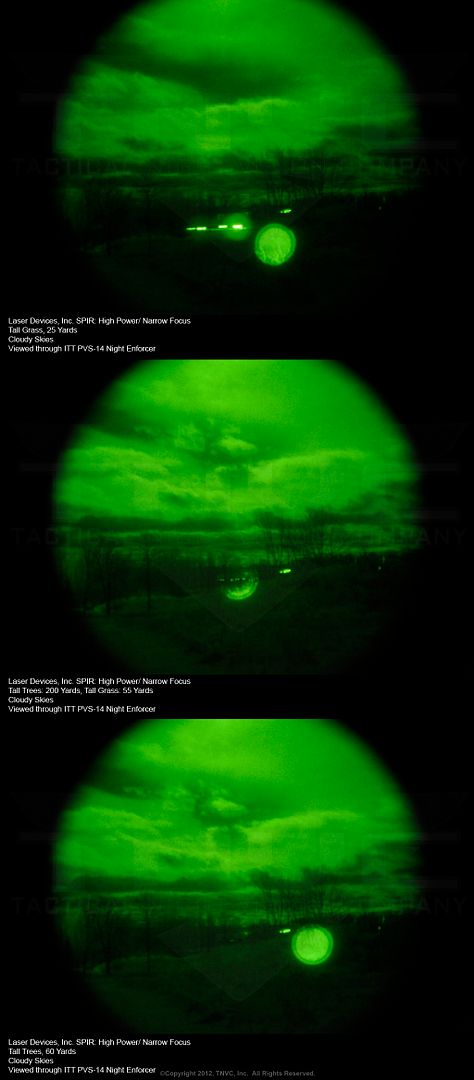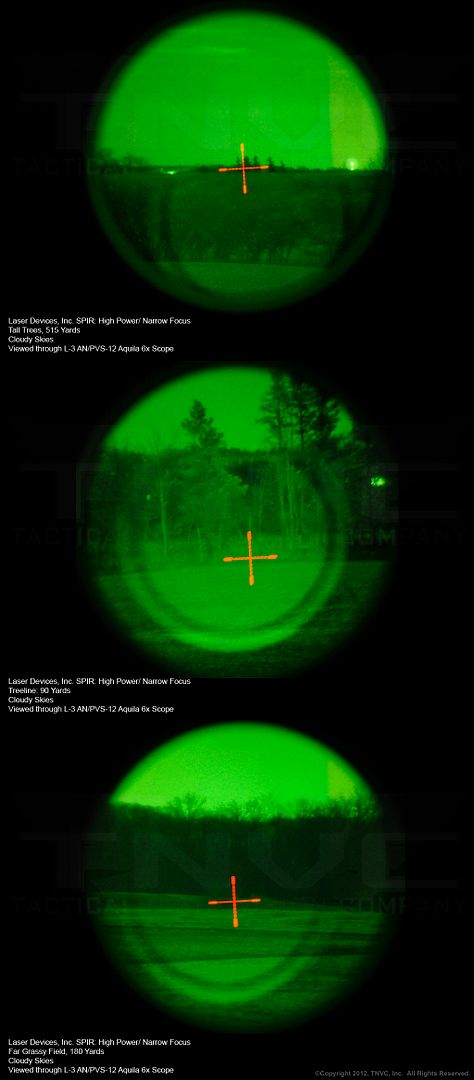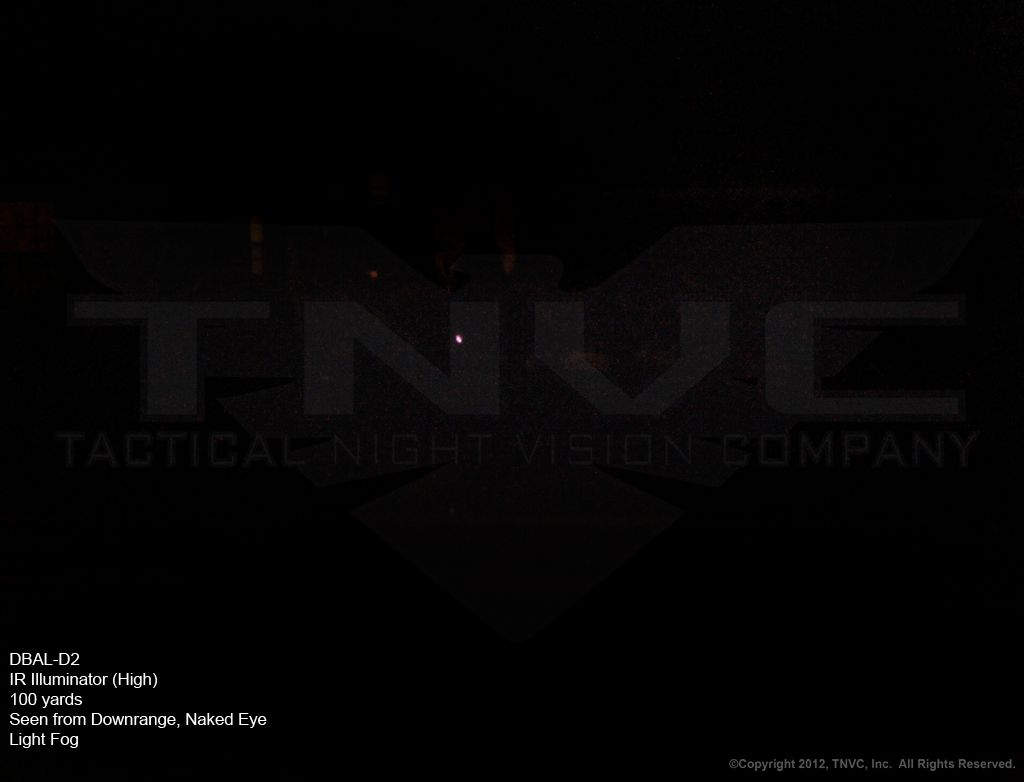Night Vision is not magic. It doesn't work the way Hollywood and Call of Duty would have you believe. It doesn't automatically grant us super powers and make us masters of the darkness. It takes hundreds of hours under goggles to become proficient in its use. And even then, there are many limitations to the technology. For one, image intensifiers are just that: intensifiers. They amplify the existing ambient light. Current Gen3 devices can do a whole lot more with a whole lot less than legacy systems, but in the end; their performance is still slave to the amount of light they can gather. No, night vision is not magic... at least not on its own.
Infrared Illuminators are one of the key tools that, used in conjunction with image intensifiers, allow operators to maintain the edge even when Mother Nature is not playing ball. Extreme darkness, like that found in caves, under thick tree canopy, inside windowless dwellings, or under heavy cloud cover, has the possibility to cut your night vision detection and identification ranges in half - almost akin to walking around in the dark. Normally, we would pull out our handy flashlight and light up our way. But, we are using night vision because we want to achieve stealth. We don't want to alert the man-dress-wearing/ goat-fornicating Haji or land-destroying hog that we are there, about to send them to the great beyond. So, we use an infrared flashlight to aid our night vision. These IR illuminators are usually mounted on weapons. Some operators will attach lower-power ones to their helmets. But, the bottom line is that illuminators are some of the most important accessories you can deploy while using night vision goggles.
Military/LE Class IIIb IR laser modules have both IR lasers and IR illuminators built into the same package. But, these are restricted from individual sale. Class IIIb devices have outputs higher than 1mW, making them unsafe if shined into the eye. However, infrared LED's are another story. Unlike lasers, LED's are not regulated as harmful to the eye. So, IR LED's fill the void in the commercial market for a high-power IR Illuminator that would otherwise be restricted. But, most IR illuminators built for the commercial market have only solved bits of the problem. While there are a lot of IR illuminators available to the civilian public, some units' quality is questionable, while others have underwhelming performance. Most, if not all of these devices are made overseas. The problem of less-than optimal IR LED illuminators plagues the professional market too. Most LE departments do not see the need or have the budget to supply their guys with proper night vision kit and accessories. So, it is up to the individual officers to buy their own gear. The problem is the Class IIIb laser/illuminators cannot be sold to individual officers. So, they are left to scrounge what is available commercially, running into the same questionable quality/ performance presented to civilians.

Laser Devices, Inc. keenly identified this issue and decided to take action. Following on the heels of their extremely successful Civilian-legal Class1 IR Laser series, LDI is taking the market by storm with their revolutionary new SPIR (Special Purpose IR) LED Illuminator. LDI sent us a pre-production unit for T/E. The SPIR is a variable-power, focusable IR LED Illuminator. It can be weapon-mounted or hand-held. The high/low settings produce <600mW / <300mW respectively and the rotating bezel allows the beam to focus between 2° and 30°. This allows users to produce tight, long-range throw or wide, short-range throw with larger spill. The unit is housed in a 6061 T-6 anodized aircraft aluminum body and features LDI's patented self-adjusting quick-detach HT mount. A polymer objective cover is tethered by two rubber arms. There are two models available: a CR123A Battery version or a AA Battery version. I prefer the model that is powered by two 3-Volt CR123A's because it runs longer. Controls are placed on the rear of the battery compartment and are very intuitive. There is a three-position power lever for Off, Low, High, and a single fire button that can be pressed and held for momentary activation or double-clicked for constant on. There is also a port for plugging in an included 7" remote pressure switch (if you're into that sort of thing).
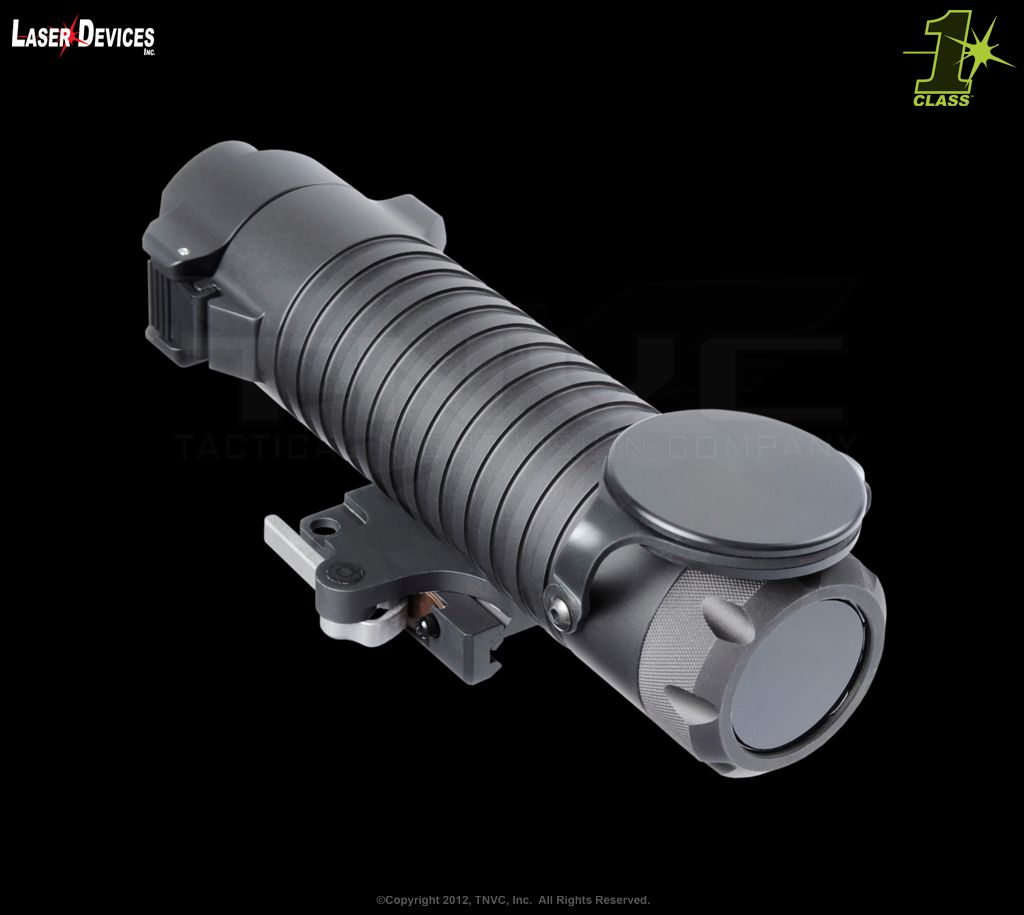
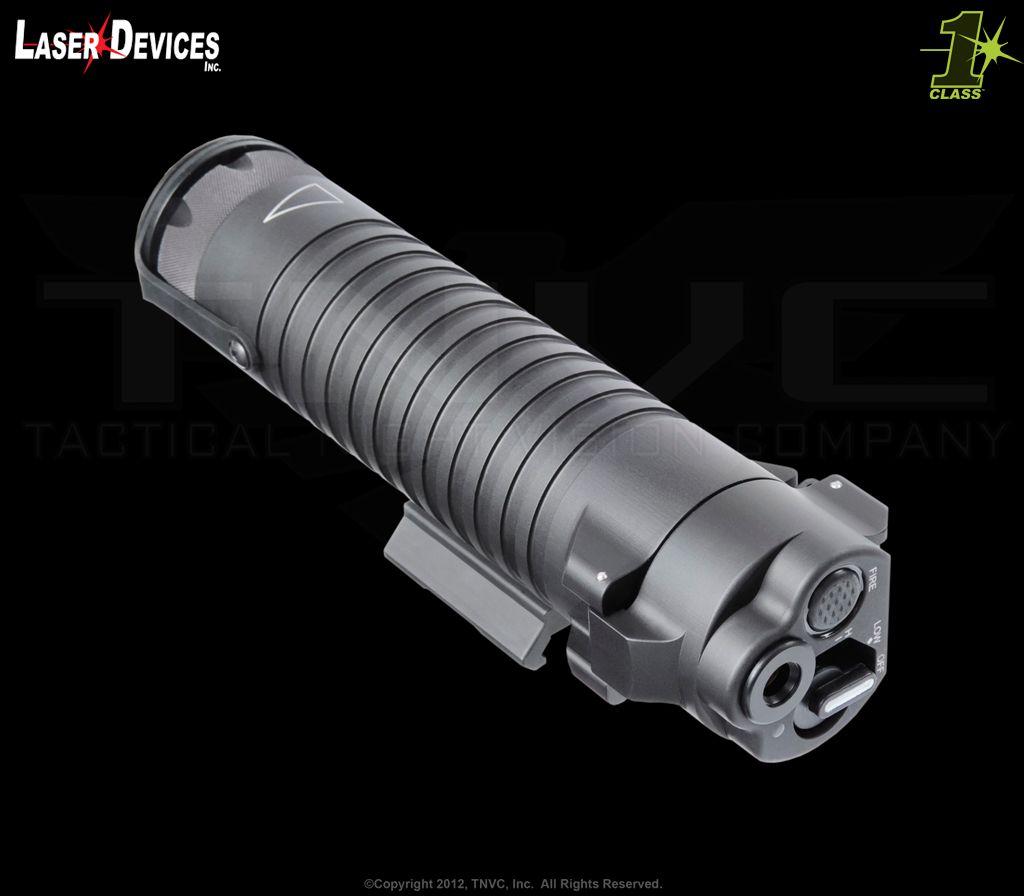
The SPIR feels very solid compared to other offerings on the market. In fact, this is the first IR LED Illuminator that I would recommend for use by professionals because I am confident that it will stand up to battlefield abuse. It is built like a tank and just feels solid. Yes, it is a bit larger than some of the other illuminators out there, but the benefits bury this slight drawback. I found the controls easy to operate, even with gloves. The inclusion of a fire button allows for thumb activation while using a vertical grip and doesn't require the switching of tail caps to choose either thumb or remote switch activation. If you turn the SPIR to constant-on while set to high power, it will shut off and need to be reactivated if you move the power lever to high power. This is an interesting occurrence and I am not sure why LDI chose to do it. I will be discussing this feature with them to find out why. The focus adjustment is made at the bezel and is accomplished by twisting the bezel clockwise or counter clockwise. A laser engraved cone diagram tells you which way to turn it for wide or narrow. The bezel is easily turned with gloves.
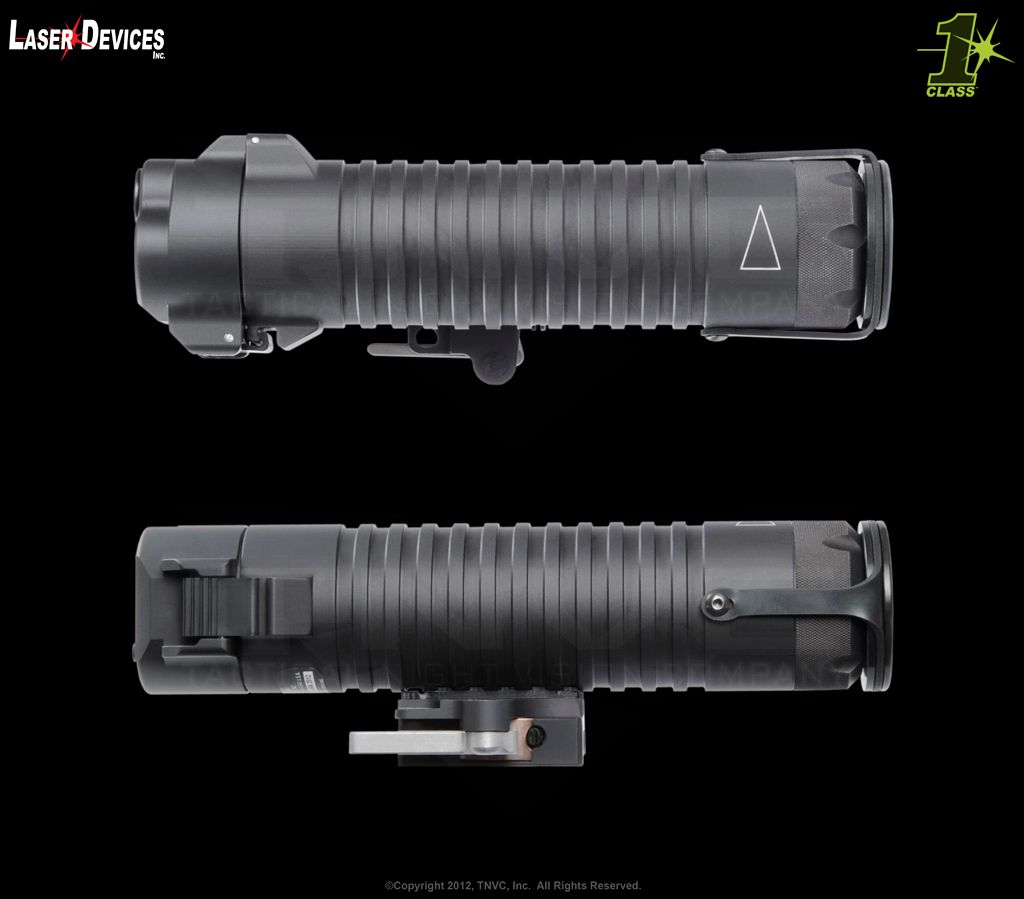

PERFORMANCE
As you would imagine with the specs mentioned above, the performance of the SPIR is top notch. When the bezel is dialed down to 2° and the unit is set to high power, it reaches out to 800 yards. Now, what does that mean? An 800 yard night vision shot is highly unlikely. But, it does allow for movement to be detected while using a magnified optic. That distance is beyond the detection range of a standard goggle, though. So, at 800 yards, the SPIR still provided just enough illumination to detect movement of a man-sized object using an AN/PVS-12 Aquila 6x night vision scope. Keep in mind that this was pushing the edge of useable illumination, but the fact that I could detect movement at that range impressed me. For a professional LEO, that means he/she could spot movement of a suspect at a target location while keeping his/her distance further than they could before. I wish I could show photographic or video proof of this detection range, but it is virtually impossible to pick up that kind of detail on camera through night vision. It has to be witnessed first person.
So, let's look at some photos. Starting off easy; below is a comparison of images during a night with clear skies. You will notice that the environment is significantly brighter than the following images because of this. The first photo shows no use of the SPIR and is to be used as a control. Next is an image that shows low power mode. This offered relatively little benefit in such a wide open area with good ambient light. But, the last image shows focused high power. It allowed me to see into the tall grass, calling out individual blades. Without it, the grass looked like a solid clump of foliage.
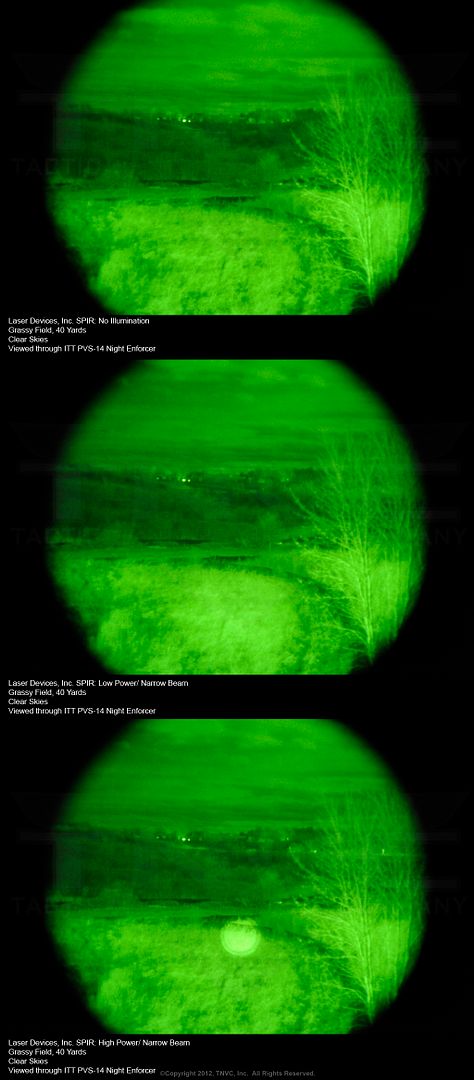
This next image shows the high power focused beam aimed at a further target. Note how the grassy area in the beam is visibly brighter. At this distance, a standard Gen3 goggle begins to reach its limitations for detection. But, with the SPIR, you can provide more light and further the detection range, increasing operational capability.
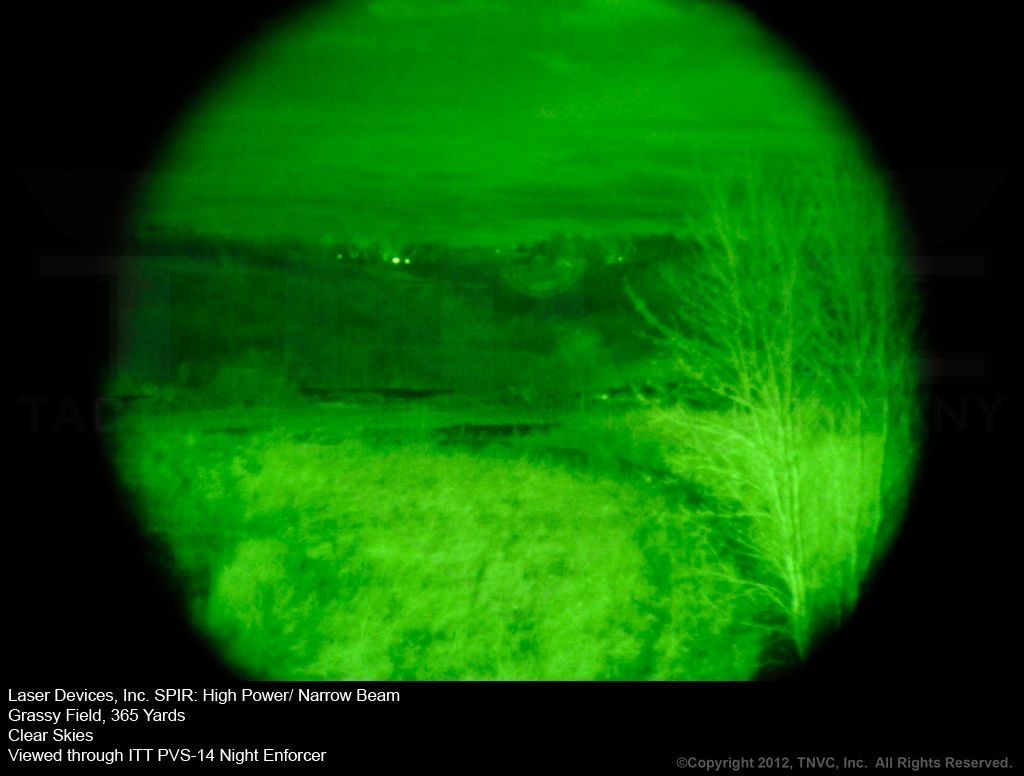
The next group of images was taken under less than optimal ambient light conditions. The first image, again shows the affect on distant terrain, but also slightly illuminates the branches of a closer tree. In some cases, the tightly focused high power setting reflects off of close surfaces too much. Users will need to take care to apply it properly in different situations. The bottom photo details the wider beam setting and its benefits in relatively closer areas. The grass in this area is knee-waist in height and could easily conceal people or animals. Night vision is often fooled by thick vegetation and foliage, making it appear as clumps and allowing things to be better concealed. With the SPIR, I could easily see directly into the grass. Anything hiding would have become immediately known to me.

This set of images is meant more to convey the level of detail that can be observed with the SPIR's illuminator. Notice how focused the beam is. It is perfectly round and doesn't contain any of the blotchy spots usually seen in other illuminators (including lasers). The trees are clearly lit up. Outside the beam, the trees are completely in shadow and appear as dark masses. Inside the beam, you can clearly see individual branches and details. Again, the same is displayed in the grass.

Next, we have a comparison of the low and high power settings with a wide focus. The wide focus is more diffused than the narrow focus and the edges of the beam are much less defined. But, the spill of the beam is significantly greater. This setting was very useful for area observation, closer in. I noticed its effectiveness waning after about 200 yards, though. But, those distances would call for a more pointed illumination cone anyway because you would most likely be using magnified optics to observe a specific thing. The low power setting was much more useful on this night than the night with clear skies. It tended to wash out a bit with more ambient light. But, on a really dark night, the low power was definitely preferred while stalking through the field. Compared to the high power (even with the wide beam), it provided much more depth to the image since I wasn't flooding an area with light, causing it to splash back at me.
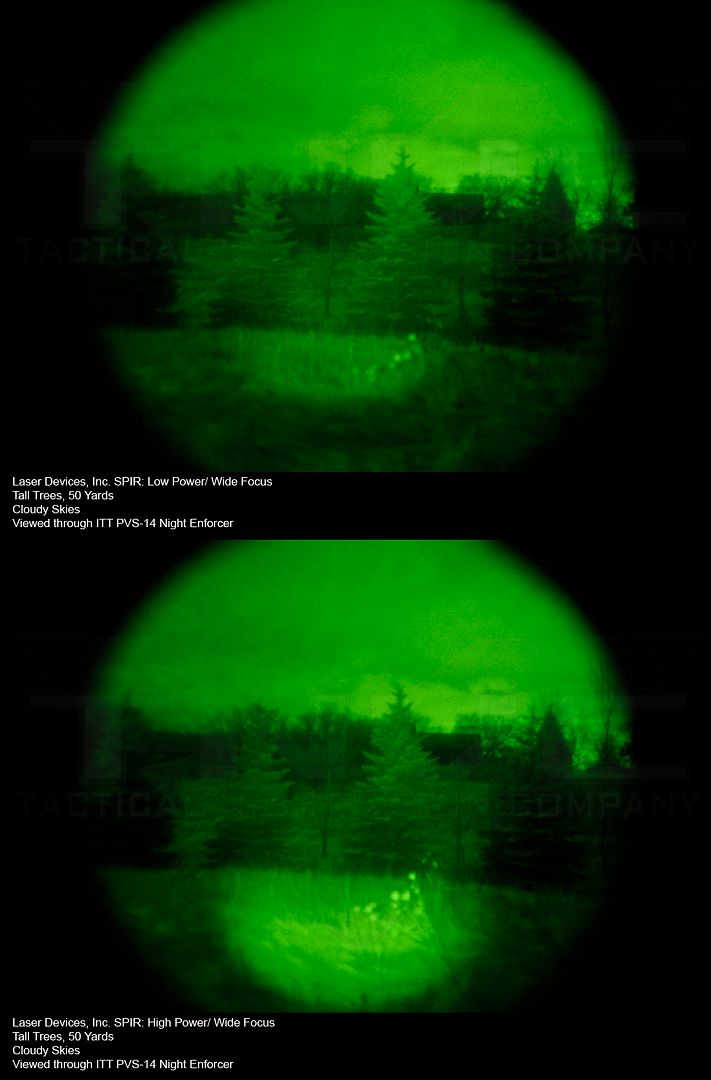
Infrared Illuminators are one of the key tools that, used in conjunction with image intensifiers, allow operators to maintain the edge even when Mother Nature is not playing ball. Extreme darkness, like that found in caves, under thick tree canopy, inside windowless dwellings, or under heavy cloud cover, has the possibility to cut your night vision detection and identification ranges in half - almost akin to walking around in the dark. Normally, we would pull out our handy flashlight and light up our way. But, we are using night vision because we want to achieve stealth. We don't want to alert the man-dress-wearing/ goat-fornicating Haji or land-destroying hog that we are there, about to send them to the great beyond. So, we use an infrared flashlight to aid our night vision. These IR illuminators are usually mounted on weapons. Some operators will attach lower-power ones to their helmets. But, the bottom line is that illuminators are some of the most important accessories you can deploy while using night vision goggles.
Military/LE Class IIIb IR laser modules have both IR lasers and IR illuminators built into the same package. But, these are restricted from individual sale. Class IIIb devices have outputs higher than 1mW, making them unsafe if shined into the eye. However, infrared LED's are another story. Unlike lasers, LED's are not regulated as harmful to the eye. So, IR LED's fill the void in the commercial market for a high-power IR Illuminator that would otherwise be restricted. But, most IR illuminators built for the commercial market have only solved bits of the problem. While there are a lot of IR illuminators available to the civilian public, some units' quality is questionable, while others have underwhelming performance. Most, if not all of these devices are made overseas. The problem of less-than optimal IR LED illuminators plagues the professional market too. Most LE departments do not see the need or have the budget to supply their guys with proper night vision kit and accessories. So, it is up to the individual officers to buy their own gear. The problem is the Class IIIb laser/illuminators cannot be sold to individual officers. So, they are left to scrounge what is available commercially, running into the same questionable quality/ performance presented to civilians.

Laser Devices, Inc. keenly identified this issue and decided to take action. Following on the heels of their extremely successful Civilian-legal Class1 IR Laser series, LDI is taking the market by storm with their revolutionary new SPIR (Special Purpose IR) LED Illuminator. LDI sent us a pre-production unit for T/E. The SPIR is a variable-power, focusable IR LED Illuminator. It can be weapon-mounted or hand-held. The high/low settings produce <600mW / <300mW respectively and the rotating bezel allows the beam to focus between 2° and 30°. This allows users to produce tight, long-range throw or wide, short-range throw with larger spill. The unit is housed in a 6061 T-6 anodized aircraft aluminum body and features LDI's patented self-adjusting quick-detach HT mount. A polymer objective cover is tethered by two rubber arms. There are two models available: a CR123A Battery version or a AA Battery version. I prefer the model that is powered by two 3-Volt CR123A's because it runs longer. Controls are placed on the rear of the battery compartment and are very intuitive. There is a three-position power lever for Off, Low, High, and a single fire button that can be pressed and held for momentary activation or double-clicked for constant on. There is also a port for plugging in an included 7" remote pressure switch (if you're into that sort of thing).


The SPIR feels very solid compared to other offerings on the market. In fact, this is the first IR LED Illuminator that I would recommend for use by professionals because I am confident that it will stand up to battlefield abuse. It is built like a tank and just feels solid. Yes, it is a bit larger than some of the other illuminators out there, but the benefits bury this slight drawback. I found the controls easy to operate, even with gloves. The inclusion of a fire button allows for thumb activation while using a vertical grip and doesn't require the switching of tail caps to choose either thumb or remote switch activation. If you turn the SPIR to constant-on while set to high power, it will shut off and need to be reactivated if you move the power lever to high power. This is an interesting occurrence and I am not sure why LDI chose to do it. I will be discussing this feature with them to find out why. The focus adjustment is made at the bezel and is accomplished by twisting the bezel clockwise or counter clockwise. A laser engraved cone diagram tells you which way to turn it for wide or narrow. The bezel is easily turned with gloves.


PERFORMANCE
As you would imagine with the specs mentioned above, the performance of the SPIR is top notch. When the bezel is dialed down to 2° and the unit is set to high power, it reaches out to 800 yards. Now, what does that mean? An 800 yard night vision shot is highly unlikely. But, it does allow for movement to be detected while using a magnified optic. That distance is beyond the detection range of a standard goggle, though. So, at 800 yards, the SPIR still provided just enough illumination to detect movement of a man-sized object using an AN/PVS-12 Aquila 6x night vision scope. Keep in mind that this was pushing the edge of useable illumination, but the fact that I could detect movement at that range impressed me. For a professional LEO, that means he/she could spot movement of a suspect at a target location while keeping his/her distance further than they could before. I wish I could show photographic or video proof of this detection range, but it is virtually impossible to pick up that kind of detail on camera through night vision. It has to be witnessed first person.
So, let's look at some photos. Starting off easy; below is a comparison of images during a night with clear skies. You will notice that the environment is significantly brighter than the following images because of this. The first photo shows no use of the SPIR and is to be used as a control. Next is an image that shows low power mode. This offered relatively little benefit in such a wide open area with good ambient light. But, the last image shows focused high power. It allowed me to see into the tall grass, calling out individual blades. Without it, the grass looked like a solid clump of foliage.

This next image shows the high power focused beam aimed at a further target. Note how the grassy area in the beam is visibly brighter. At this distance, a standard Gen3 goggle begins to reach its limitations for detection. But, with the SPIR, you can provide more light and further the detection range, increasing operational capability.

The next group of images was taken under less than optimal ambient light conditions. The first image, again shows the affect on distant terrain, but also slightly illuminates the branches of a closer tree. In some cases, the tightly focused high power setting reflects off of close surfaces too much. Users will need to take care to apply it properly in different situations. The bottom photo details the wider beam setting and its benefits in relatively closer areas. The grass in this area is knee-waist in height and could easily conceal people or animals. Night vision is often fooled by thick vegetation and foliage, making it appear as clumps and allowing things to be better concealed. With the SPIR, I could easily see directly into the grass. Anything hiding would have become immediately known to me.

This set of images is meant more to convey the level of detail that can be observed with the SPIR's illuminator. Notice how focused the beam is. It is perfectly round and doesn't contain any of the blotchy spots usually seen in other illuminators (including lasers). The trees are clearly lit up. Outside the beam, the trees are completely in shadow and appear as dark masses. Inside the beam, you can clearly see individual branches and details. Again, the same is displayed in the grass.

Next, we have a comparison of the low and high power settings with a wide focus. The wide focus is more diffused than the narrow focus and the edges of the beam are much less defined. But, the spill of the beam is significantly greater. This setting was very useful for area observation, closer in. I noticed its effectiveness waning after about 200 yards, though. But, those distances would call for a more pointed illumination cone anyway because you would most likely be using magnified optics to observe a specific thing. The low power setting was much more useful on this night than the night with clear skies. It tended to wash out a bit with more ambient light. But, on a really dark night, the low power was definitely preferred while stalking through the field. Compared to the high power (even with the wide beam), it provided much more depth to the image since I wasn't flooding an area with light, causing it to splash back at me.


